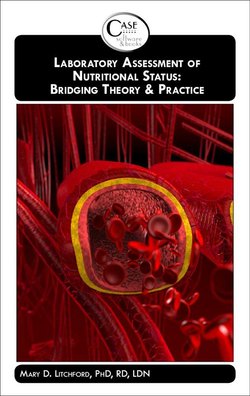Читать книгу Laboratory Assessment of Nutritional Status: Bridging Theory & Practice - MARY LITCHFORD - Страница 13
На сайте Литреса книга снята с продажи.
Nutritional Anemias
ОглавлениеAnemia is symptomatic of a disease and is a biomarker for increased morbidity, mortality, hospitalizations and healthcare costs. It is a significant clinical finding and efforts should be made to determine its etiology (Andrews, 1999; Rockey, 1999).
The prevalence of anemia increases with each decade of life over age 70 and is associated with both frailty and mobility impairment (AMDA, 2007). Macrocytic anemia in older adults is often due to insufficient dietary vitamin B12 or folic acid. Other causes of macrocytic anemia include kidney disease, hemolytic anemia, hypothyroidism, or certain medications.
With aging, there is a decrease in iron in RBC (Fischbach, 2008; Corbett, 2000). The mechanism is not known, although iron seems to be absorbed from the intestine. However, there is a decreased incorporation of iron into the RBC resulting in lower hemoglobin levels (Beers, 2005). The significance of this drop in hemoglobin is not known. In addition, MCV (MCV) increases slightly with age.
Anemia is a deficiency in the erythrocyte mass and hemoglobin contents. A low hemoglobin or hematocrit needs to be evaluated further by a complete blood cell count (CBC), including hemoglobin concentration, hematocrit, red blood cell mass, and MCV (Blackwell, 2001). Norms are assuming adequate hydration. If the patient is dehydrated, the values will be falsely high. Overhydration will result in falsely low values.
Patients with an infection or other inflammatory processes present often have low hemoglobins and hematocrits related to redistribution of iron rather than a change in nutritional status. With infection, the cytokine interleukin-1β (IL-1β) inhibits the production and release of transferrin while stimulating the synthesis of ferritin. The net result is that iron is moved from transferrin and hemoglobin to ferritin. The redistribution of iron stores is a protective mechanism since many virulent bacterium have specialized receptors for iron uptake. The survival of the bacterium within the host is dependent upon its ability to extract nutrients from the surrounding environment.
